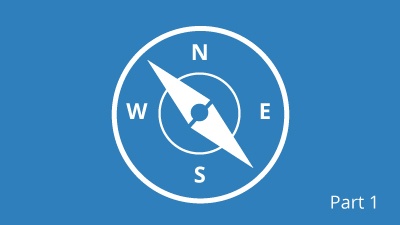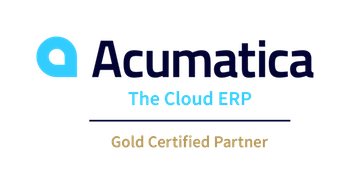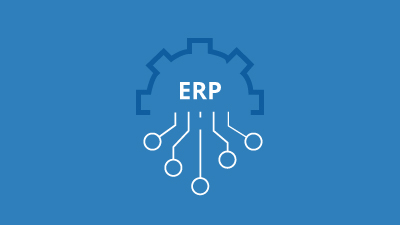Charting Your Course to Smarter Business Management Software (Part 1)

When it comes to running a business, there are few things as stressful as a change to your enterprise resource management software. Why? Because it changes every facet of your business operations. Often this switch requires not only a change in software, but a change in culture as well, creating a very tense, politicized environment before you even decide on which product you want to use. Some people are apprehensive to change, others fear that the upgrade could result in pink slips. And with all the backfighting that happens before the project, you still have the hardest part—implementing the software, moving the data, and training the people.
It’s part of the reason that failure is so common in ERP implementation, with approximately 55-75% of projects being delayed or failing to return the expected value.
However, we’re not here to scare you away from a change in ERP software, because no matter how much of a challenge the ERP selection and implementation process is, it’s often better than watching your people struggle to get even the most basic tasks done as your business grows. At Cloud 9 ERP, we know what it takes to make an ERP implementation project successful and as an Acumatica Gold Partner, we’ve proven that fact.
Five Steps to a Low-Risk ERP Implementation
So, how do you remove the risk from an ERP implementation? Plan, prepare and execute. With the help of your implementation partner, you can take steps to address issues before they happen, avoiding cost overruns, poor scheduling, or complete failure. Today, we would like to share with you a five-step framework to ensure that your ERP implementation goes off with minimal risk and maximum reward.
1) Lay the Framework
ERP projects are major changes, and rushing into a decision is nearly as dangerous as waiting too long to make one. You need to sell the executives, end users, and more on the value of a project, plan your path to decision and selection, and start to build a project team who can keep motivation high during this disruptive process.
Why Do You Need a New ERP System?
First, ask yourself and other decision makers why you need a new ERP system. Are you seeing end users struggle? Are you worried about errors popping up? Is your system damaging your reputation with customers and suppliers? When you can answer this question, you can start thinking of strategies to sell a project to the rest of the organization. From here, you can begin a preliminary ROI justification to estimate how much a project might help your company as a whole.
Related: When is it time to replace your ERP system?
Getting Input
When you begin to look at an ERP project, one of the biggest risks that can take place is a war of attrition that occurs when a user feels like he or she is being dragged along for the ride, rather than actively having needs met by a new system. Since ERP touches so much of your company, decisions should have representation from all areas of the business – engineering, materials, production, finance, customer service, etc.—and these users should be involved from the start. For more information on building your ERP project team, check out a recent blog from our ERP implementation series.
Outlining a Plan
From goals to timing, your team should begin to develop a framework for the project. What do they expect from the implementation process and implementation partner? How long should it take? How much customization will you require? All of this comes together to document an outline or strategy you can build around to avoid surprises.
2) Preparing the Troops
With planning in place, it’s time to start your journey. Now that you know that you need a new ERP platform, you need to consider your options, explain to everyone what ERP is and why this journey is one that will ultimately benefit your company, decide on which platform is best and select your implementation partner.
Getting Your Requirements
What’s important to your people? This should be a critical question when looking at ERP software, as it builds upon the need to listen to end users and allows you to document concerns and build roadmaps around their concerns. With the goals and guidelines understood and the team in place to forge ahead, it’s time to start drafting your shopping list, honestly prioritizing needs into the following categories: Must have functionality, highly desirable features, capabilities we will likely need in the future, and nice-to-have features. When you work on this list, be sure not to let “nice-to-have” functions distract you from the main goals of getting a new ERP up and running.
Solidifying Your ROI Justification
In step 1, you quantified the value of ERP in general, but now that you have a long list of potential vendors, it’s time to start fleshing out the details. While you won’t have final ROI calculations in place, you can start getting a big picture of where each software will take you in terms of cost and benefit.
Related: How to Measure ERP Return on Investment (ROI)
The Journey to Smarter Business Management Software Starts with a Single Step
There are many paths to success when you look to upgrade an enterprise application like ERP. However, some are bumpier than others and some may have a few more twists and turns. However, by laying the groundwork before you make any kind of decision, you can start your journey on the right foot while avoiding the risk of cost overruns or additional charges, changes in timelines, or other challenges that may pop up during the implementation process.
At Cloud 9 ERP Solutions, we know the ERP journey and have helped companies just like yours to navigate it with ease. In part 2 of this blog, we will explore the best practices in choosing a vendor and implementation partner, the implementation process, and the go-live process. We invite you to sign up for our email list to stay up to date with all of the latest from us, and contact us if you’re ready to learn more about taking your cloud ERP journey with Acumatica and Cloud 9.


